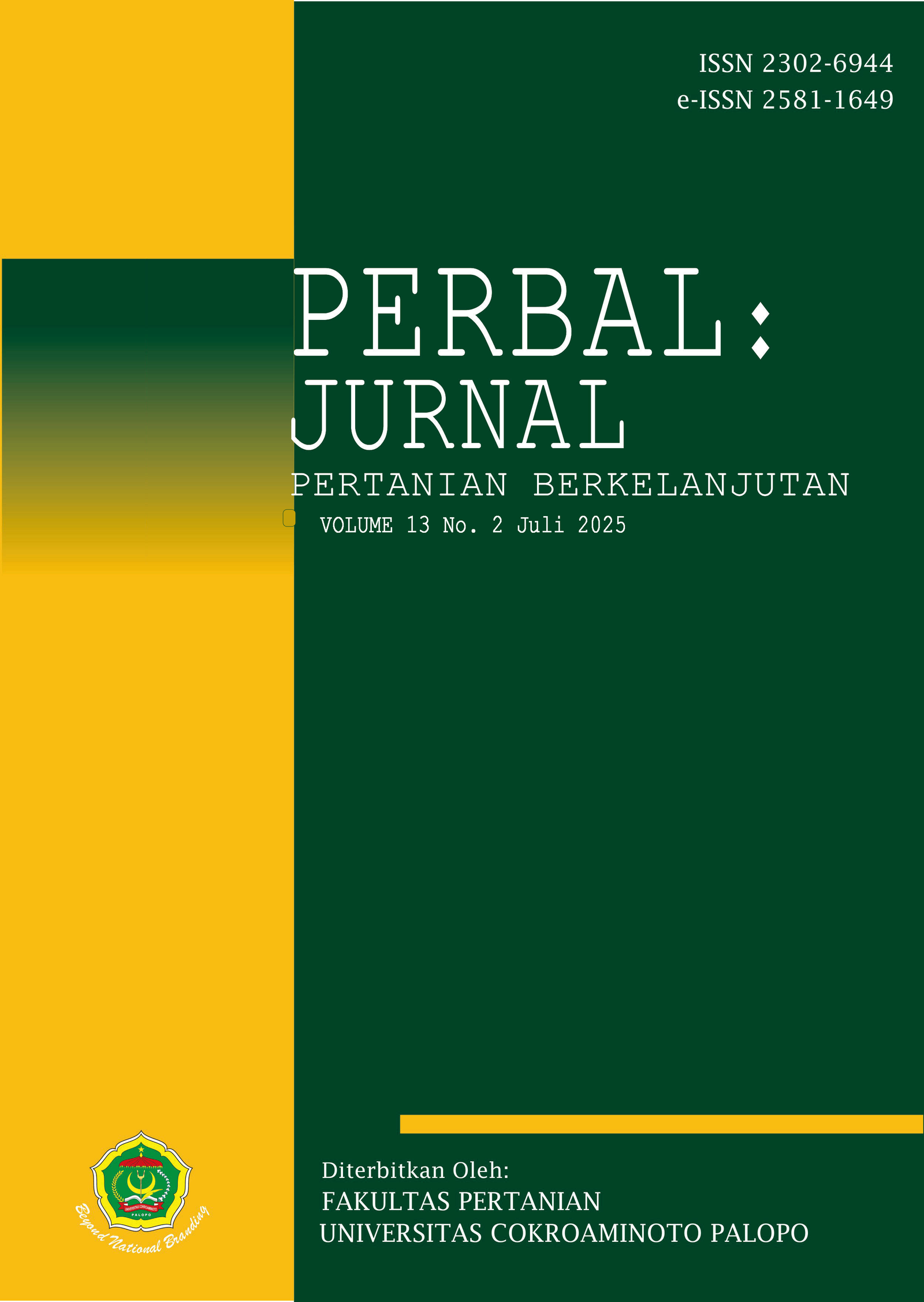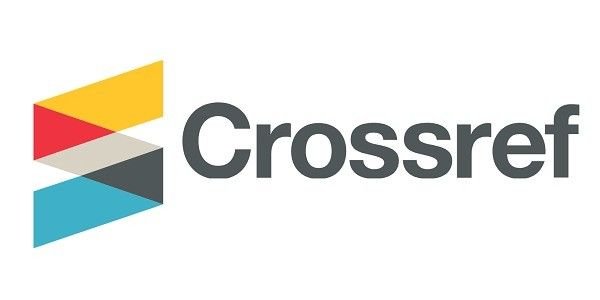Motivasi Petani Kapulaga dalam Kemitraan Agribisnis Berkelanjutan
Cardamom Farmers' Motivation in Sustainable Agribusiness Partnerships
DOI:
https://doi.org/10.30605/perbal.v13i2.6157Keywords:
Petani kapulaga, motivasi petani, kemitraanAbstract
Petani kapulaga mengalami masalah dalam pemasaran produknya. Satu sisi kapulaga merupakan komoditas yang bernilai ekonomi di pasar nasional maupun internasional, namun petani masih kesulitan dalam mengakses pasar dan memenuhi standar kualitas produk yang ditentukan pasar. Kemitraan petani dengan perusahaan agribisnis merupakan salah satu solusi untuk mendekatkan petani dengan pasar dan mendapat kepastian harga yang layak. Kemitraan petani dan perusahaan difasilitasi oleh kelompok tani sehingga memudahkan dalam bernegosiasi harga dengan perusahaan maupun dalam mengakses pasar. Penelitian dilakukan pada bulan Agustus-Oktober 2024 dengan melakukan survei pada 50 responden petani kapulaga yang telah bermitra dengan perusahaan. Kemitraan petani kapulaga di Banyumas ini sudah berlangsung sejak tahun 2019 hingga sekarang dengan karakteristik yang bermitra berusia 42-50 tahun (38%), mayoritas petani sebagai mata pencaharian pokok (70%), pendapatan sebulan berkisar Rp 2.100.000,00 -Rp 3.000.000,00 dan pendidikan mayoritas SMP (30%). Secara deskriptif tingkat motivasi petani berkategori cukup (64%) dan uji korelasi menyatakan koefisien hubungan tingkat motivasi dan kemitraan agribisnis sebesar 0,56 (sedang) dengan signifikansi 0,00 (signifikan).
Cardamom farmers experience problems in marketing their products. On the one hand, cardamom is a economical commodity in domesctic dan international market demand, but farmers still have difficulty in accessing the market and meeting product quality standards set by the market. Partnerships between farmers and agribusiness companies are one solution to bring farmers closer to the market and get certainty of a fair price. Partnerships between farmers and companies are facilitated by farmer groups, making it easier to negotiate prices with companies and access markets. The study was conducted in August-October 2024 by surveying 50 cardamom farmer respondents who had partnered with the company. The partnership of cardamom farmers in Banyumas has been going on since 2019 until now with the characteristics of partners aged 42-50 years (38%), main livelihood (70%), monthly income ranging from IDR 2,100,000.00 -IDR 3,000,000.00 and the majority of junior high school education (30%). Descriptively, the level of farmer motivation is categorized as sufficient (64%) and the correlation test states the coefficient of the relationship between the level of motivation and agribusiness partnership is 0.56 (moderate) with a significance of 0.00 (significant).
Downloads
References
Andrianto, R., Noor, T. I., & Nurahman, I. S. (2023). Strategi pemasaran kapulaga (studi kasus di Desa Pasawahan Kecamatan Banjaranyar Kabupaten Ciamis). Jurnal Ilmiah Mahasiswa Agroinfo Galuh, 10(2), 795-822. DOI: https://doi.org/10.25157/jimag.v10i2.8317
Arouna, A., Michler, J. D., Lokossou, J. C., Arends-kuenning, M., Barrett, C., Baylis, K., Brooks, K., Carter, M., Casaburi, L., Ingram, M., Josephson, A., Lim, S., & Michelson, H. (2021). Contract farming and rural transformation: Evidence from a fi eld experiment in Benin. Journal of Development Economics, 151. DOI: https://doi.org/10.1016/j.jdeveco.2021.102626
Aruna, R., Mahesh, M. P., & Revathi, D. (2021). Export performance of small cardamom from India: A perspective. International Journal of Modern Agriculture, 10(2), 3222–3228.
Badan Pusat Statistik. (2022). Perkembangan Nilai Tukar Petani dan Harga Produsen Gabah. Berita Resmi Statistik, No.33/06/33/Th.XVI, 2 Juni 2022
Bitzer, V., & Bijman, J. (2014). Old oranges in new boxes? Strategic partnerships between emerging farmers and agribusinesses in South Africa. Journal of Southern African Studies, 40(1), 167–183. DOI: https://doi.org/10.1080/03057070.2014.877647
Chasanah, N. (2017). Daya saing dan kemiripan struktur ekspor hortikultura Indonesia dalam kerangka ASEAN. Agro Ekonomi, 28(1), 32–47. DOI: https://doi.org/10.22146/jae.25583
Ginting, I. M. (2015). Pengaruh celebrity endorsement, brand image, dan testimoni terhadap minat beli konsumen produk mie instan Lemonilo pada media sosial Instagram. Jurnal Manajemen, 6(1), 131–143.
Illahi, A. (2021). Efisiensi pemasaran kapulaga di Desa Sunyulangu Kecamatan Karanglewas Banyumas. Jurnal Ekonomi Pertanian dan Agribisnis, 5(201), 1146–1156. DOI: https://doi.org/10.21776/ub.jepa.2021.005.04.17
Khamdan, A. (2016). Partnership program system trought Si Bule Albino institutional business by Mine Firm In Binuang District Kab. Tapin. AdBispreneur: Jurnal Pemikiran dan Penelitian Administrasi Bisnis dan Kewirausahaan, 1(1), 73-84. DOI: https://doi.org/10.24198/adbispreneur.v1i1.9096
Managanta, A.A. (2018). Kemandirian Petani Dalam Meningkatkan Produktivitas Usahatani Kakao di Provinsi Sulawesi Tengah. Disertasi. Sekolah Pasca Sarjana, Institut Pertanian Bogor, Bogor.
Suhartini, N. A., Riantin, W., & Darusman, D. (2021). Daya saing pala, lawang, dan kapulaga Indonesia di pasar internasional. Jurnal Agristan, 3(2), 84-110. DOI: https://doi.org/10.37058/agristan.v3i2.3685
Sugiyono. (2017). Metode Penelitian Kuantitatif Kualtitatif dan R & D. Alfabeta. Bandung.
Tanjung, Y., Saputra, S., & Hardiyanto, S. (2021). Pemberdayaan masyarakat melalui pelatihan penggunaan media sosial untuk pemasaran produk inovasi jeruk siam. JMM (Jurnal Masyarakat Mandiri), 5(6), 3091-3103.
Widiyanti, N. M., Baga, L. M., & Suwarsinah, H. K. 2016. Kinerja usahatani dan motivasi petani dalam penerapan inovasi varietas jagung hibrida pada lahan kering di Kabupaten Lombok Timur. Penyuluhan, 12(1), 31-42. DOI: https://doi.org/10.25015/penyuluhan.v12i1.11317
Downloads
Published
Issue
Section
License
Copyright (c) 2025 Sekar Inten Mulyani, Elly Jumiati, Muh. Adiwena

This work is licensed under a Creative Commons Attribution 4.0 International License.
In submitting the manuscript to the journal, the authors certify that:
- They are authorized by their co-authors to enter into these arrangements.
- The work described has not been formally published before, except in the form of an abstract or as part of a published lecture, review, thesis, or overlay journal.
- That it is not under consideration for publication elsewhere,
- That its publication has been approved by all the author(s) and by the responsible authorities – tacitly or explicitly – of the institutes where the work has been carried out.
- They secure the right to reproduce any material that has already been published or copyrighted elsewhere.
- They agree to the following license and copyright agreement.
License and Copyright Agreement
Authors who publish with Onoma Journal: Education, Languages??, and Literature agree to the following terms:
- Authors retain copyright and grant the journal right of first publication with the work simultaneously licensed under Creative Commons Attribution License (CC BY 4.0) that allows others to share the work with an acknowledgment of the work's authorship and initial publication in this journal.
- Authors are able to enter into separate, additional contractual arrangements for the non-exclusive distribution of the journal's published version of the work (e.g., post it to an institutional repository or publish it in a book), with an acknowledgment of its initial publication in this journal.
- Authors are permitted and encouraged to post their work online (e.g., in institutional repositories or on their website) prior to and during the submission process, as it can lead to productive exchanges, as well as earlier and greater citation of published work.














